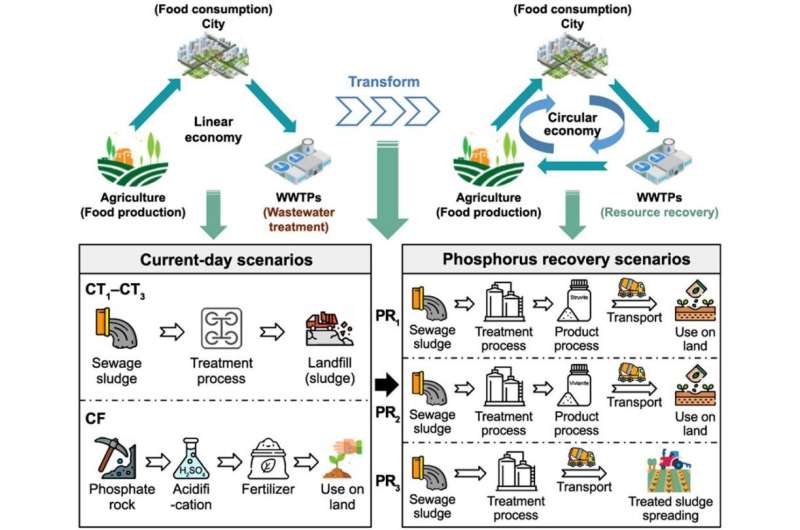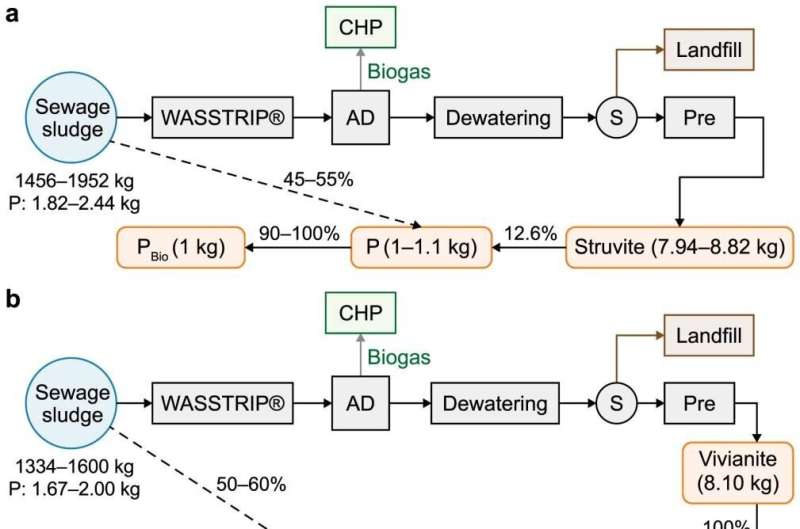This article has been reviewed according to Science X's editorial process and policies. Editors have highlighted the following attributes while ensuring the content's credibility:
fact-checked
proofread
New study explores phosphorus recovery from sewage sludge in China for environmental sustainability and cost analysis

In a new study published in the journal Environmental Science and Ecotechnology, researchers from Tianjin University evaluate the environmental sustainability and socio-economic costs of recovering phosphorus (P) from sewage sludge by replacing current-day treatments (sludge treatment and landfill) and its use in P chemical fertilizer applications in China.
The study evaluated three P recovery methods: struvite, vivianite, and treated sludge, by assessing their environmental and socio-economic impacts compared to conventional treatments. Struvite and vivianite methods showed smaller environmental footprints, while treated sludge had larger impacts. Although societal costs for P recovery from sewage sludge were initially higher than for P chemical fertilizer, they were comparable or slightly lower when considering the costs of conventional treatments. Struvite recovery emerged as the most societally feasible method among the three scenarios.

The study indicates significant benefits of P recovery from sewage sludge in China, contributing to closing the biogeochemical P cycle and reducing environmental burdens. This aligns with several UN Sustainable Development Goals, including "Zero Hunger," "Sustainable Cities and Communities," and "Clean Water and Sanitation." Despite economic and technical hurdles, the societal costs of P recovery scenarios are deemed lower than expected, considering the advantages of substituting conventional treatments.
This research provides valuable insights for improved sewage sludge management in China, promoting waste conversion into resources and supporting a sustainable phosphorus supply. It highlights the need for innovative solutions like P recovery from sewage sludge to ensure environmental sustainability and socio-economic development.
More information: Jiawen Xie et al, Environmental sustainability opportunity and socio-economic cost analyses of phosphorus recovery from sewage sludge, Environmental Science and Ecotechnology (2023). DOI: 10.1016/j.ese.2023.100258
Provided by Chinese Society for Environmental Sciences



















